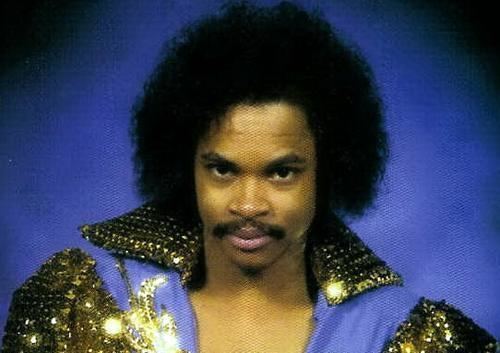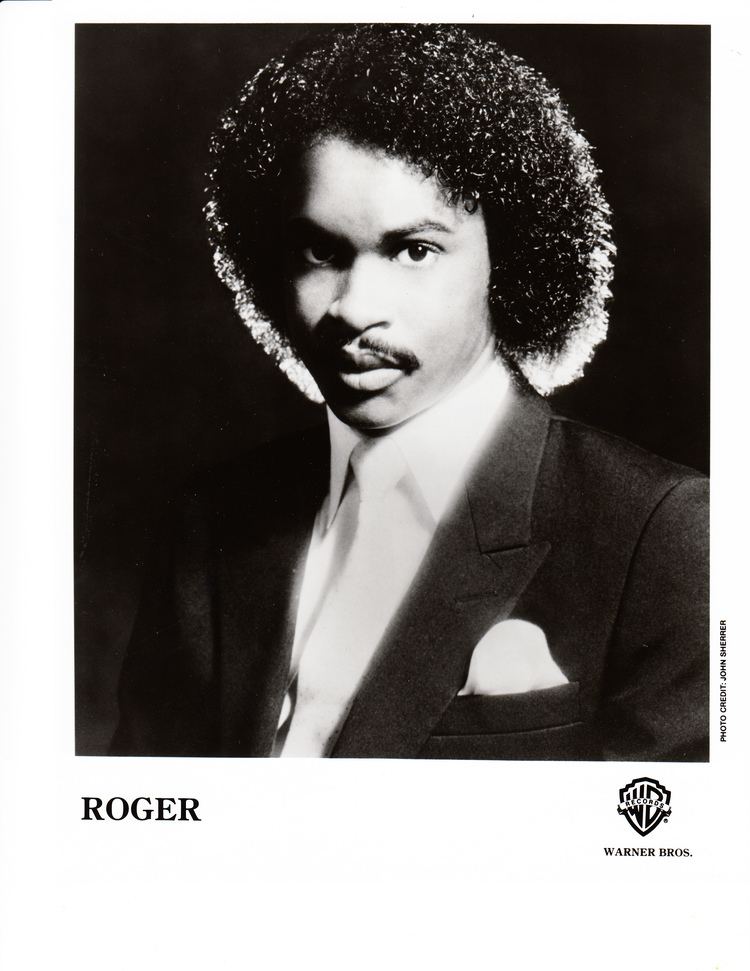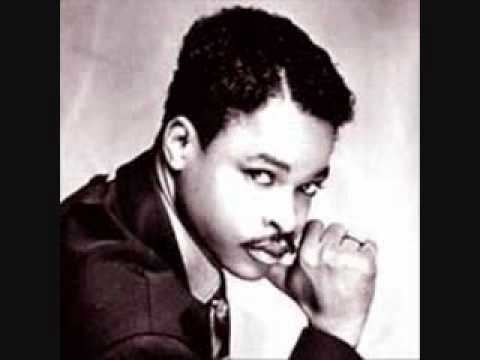Genres Funk, Electro, G-funk Role Composer Years active 1975–1999 Siblings Larry Troutman | Labels Warner Bros., Reprise Music group Zapp (1977 – 1999) Name Roger Troutman | |
 | ||
Born November 29, 1951Hamilton, Ohio, United States ( 1951-11-29 ) Occupation(s) Musician, songwriter, producer Instruments Vocals, talk box, guitar, keyboard, bass guitar, harmonica, vocoder Associated acts Zapp, Roger & the Human Body, Prince, Funkadelic, Shirley Murdock, 2Pac, Parliament, A.B. Quintanilla y los Kumbia Kings, EPMD, DJ Quik, The Crusaders, Eazy-E, Ice Cube, Tech N9ne, Snoop Dogg, Dr. Dre, Spice 1, Jesse Rae Died April 25, 1999, Dayton, Ohio, United States Children Brent Lynch, Ryan Stevens, Larry Gates, Taji J. Troutman Similar Flip Cornett, Patti LaBelle, Stephanie Mills | ||
Roger troutman part 1
Roger Troutman (November 29, 1951 – April 25, 1999), also known mononymously as Roger, was an American singer, composer, songwriter, producer, multi-instrumentalist and the founder of the band Zapp who helped spearhead the funk movement and heavily influenced west coast hip hop due to the scene's heavy sampling of his music over the years. Troutman was well known for his use of the talk box, a device that is connected to an instrument (frequently a keyboard, but most commonly a guitar) to create different vocal effects. Roger used a custom-made talkbox—the Electro Harmonix "Golden Throat," as well as a Moog Minimoog and later in his career a Yamaha DX100 FM synthesizer. As both band leader of Zapp and in his subsequent solo releases, he scored a bevy of funk and R&B hits throughout the 1980s.
Contents
- Roger troutman part 1
- 30 mn with roger troutman zapp live bet in 1989
- Early career Parliament Funkadelic and Zapp
- Solo career and production work on other artists
- Career re emergence
- Death
- References

30 mn with roger troutman zapp live bet in 1989
Early career: Parliament-Funkadelic and Zapp

Born in Hamilton, Ohio, Roger was the fourth of ten children. He was a late-arriving member of Parliament-Funkadelic and played on the band's final Warner Brothers' album The Electric Spanking of War Babies. The first band Roger was in was The Crusaders; however, they are not to be confused with the jazz group featuring Joe Sample and Wilton Felder. The band played in Cincinnati and recorded a single, "Busted Surfboard"/"Seminole". The band members were Rick Schoeny, Roy Beck, Dave Spitzmiller, and Denny Niebold. Troutman had formed various other bands with his four brothers, including Little Roger and the Vels and Roger and the Human Body. In 1977, he and the Human Body issued their first single, "Freedom". Within two years, Roger and his brothers were discovered by George Clinton, who signed the newly christened Zapp to his Uncle Jam Records label in 1979. The original line-up consisted of Roger Troutman, Larry Troutman, Lester Troutman, Terry Troutman, Gregory Jackson and Bobby Glover. Zapp made their professional television debut on the first and only Funk Music Awards show. A year later, as Uncle Jam Records was forced to close, Zapp signed to Warner Bros. Records and released their self-titled debut, which yielded the Bootsy Collins produced & Troutman-composed hit, "More Bounce to the Ounce." The song peaked at number two on the Billboard Soul Singles chart in the fall of 1980. The debut album reached the top 20 of the Billboard 200 and firmly launched Zapp and Roger into the national spotlight.

Between 1980 and 1985, Zapp released the gold-selling albums Zapp, Zapp II, Zapp III and The New Zapp IV U and released top ten R&B hit singles such as "Be Alright", "Dance Floor", "I Can Make You Dance", "Heartbreaker", "It Doesn't Really Matter" - which was a tribute to black artists of the past and present, and the Charlie Wilson and Shirley Murdock-assisted funk ballad, "Computer Love". Zapp's hit making magic faded shortly after the release of their fifth album, Zapp Vibe, in 1989. Throughout Zapp's tenure, the original lineup grew to around fifteen. In 1993, the group scored their biggest-selling album when a compilation album, Zapp & Roger: All the Greatest Hits, was released, featuring remixed cuts of Roger's solo singles and featuring the new single "Slow and Easy" as well as "Mega Medley", which put together a collection of the group's hit singles in a remix. The album sold over two million copies giving the collective their most successful album to date. After the untimely death of Roger and Larry, the remaining brothers have stepped forward with the album, Zapp VI: Back By Popular Demand in 2002.
Solo career and production work on other artists
In 1981, upon the fast-paced success of Zapp's first album, Troutman cut his first solo album, The Many Facets of Roger. Featuring his frenetic funk cover of Marvin Gaye's "I Heard It Through the Grapevine", the song exploded to number one on the R&B singles chart helping the album sell over a million copies. The album also featured the hit, "So Ruff, So Tuff", which was similar to "More Bounce..." as were most Roger/Zapp singles during this time. In 1984, Troutman issued his second solo album, The Saga Continues..., which featured the singles "Girl Cut It Out", "It's in the Mix" - which was dedicated to Soul Train and its host Don Cornelius in one verse, and a cover of Wilson Pickett's "In the Midnight Hour", which featured gospel group The Mighty Clouds of Joy. In 1987, Troutman scored his most successful solo album with Unlimited!, which featured the massive hit, "I Want to Be Your Man", which rose to number one R&B and number three on the Billboard Hot 100.
Alongside his successful careers as Zapp member and solo star, Troutman also became a hands-on producer and writer for other artists including Shirley Murdock, whose 1985 platinum debut featured the Roger-produced hit, "As We Lay". He also produced for Zapp member Dale DeGroat on his solo efforts. In 1988, Troutman made an appearance on Scritti Politti's third album Provision, providing talk box vocals on the songs "Boom There She Was" and "Sugar and Spice". Three years later, Troutman released his final solo album with Bridging the Gap, featuring the hit "Everybody (Get Up)". He worked with Elvis Costello as a guest appearance on 1991's Mighty Like a Rose on the song "The Other Side of Summer". In 1989, NBA Entertainment selected Troutman among a variety of renowned candidates to record a tribute song called "I'm So Happy" for Kareem Abdul-Jabbar, who at the time was in the final year of his record-breaking, 20-year career in the NBA.
Career re-emergence
After the release of All the Greatest Hits, Roger Troutman existed primarily by touring. Troutman was starting to be featured on hip-hop songs by this time agreeing to appear on rapper Snoop Dogg's 1993 debut, Doggystyle. In 1995 he was featured on Eazy-E's posthumous album Str8 off tha Streetz of Muthaphukkin Compton on the last track, "Eternal E", along with DJ Yella. The same year Troutman agreed to enlist vocals on 2Pac and Dr. Dre's single, "California Love". The song became Troutman's biggest-selling and most successful single to date as the song reached number one on the Billboard Hot 100 and sold over two million copies giving Troutman a Grammy nomination for Best Rap Performance by a Duo or Group. This success led to Troutman being included in a top ten R&B hit cover of The Persuaders' "Thin Line Between Love and Hate", which he produced and enlisted the talk box alongside Shirley Murdock and R&B group H-Town. The A Thin Line Between Love and Hate movie soundtrack also included a club hit "Chocolate City". In 1998, he appeared in a remix version of Sounds of Blackness' "Hold On (A Change Is Coming)", which sampled Zapp's "Doo-Wah Ditty (Blow That Thang)", Roger's last recorded guest feature was on the song "Master of The Game" from rapper Kool Keith's Album Black Elvis/Lost In Space.
Death
On the morning of April 25, 1999, Roger Troutman was found shot and critically wounded outside his northwest Dayton recording studio around 7 a.m. According to doctors, the 47-year-old had been shot several times in the torso and listed in critical condition. Roger died during surgery at Good Samaritan Hospital and Health Center. Roger's brother Larry was found dead in a car a few blocks away with a single gunshot wound to the head. A pistol was found inside the vehicle, which matched the description of a car leaving the scene of Roger Troutman's shooting according to witnesses. The gun found with Larry Troutman also matched the one that fired the fatal shots at Roger, suggesting that Larry had shot Roger and then taken his own life. With both men dead, and with no known witnesses, the specific motive for the attack remains unknown. Friends and family could only speculate that the source of a dispute was a rising tension between the brothers over issues such as Larry's financial troubles and Roger's desire to dissolve their business partnership.
Troutman, who lived 24 years in the Dayton area, was survived by 6 sons, 6 daughters, and 9 grandchildren.
